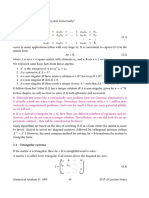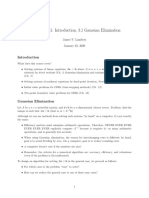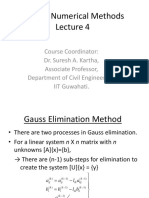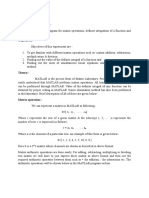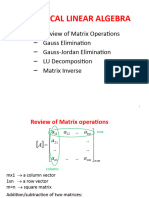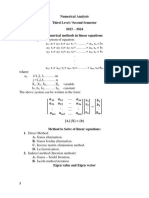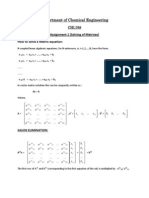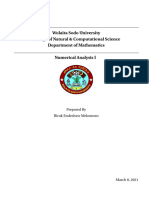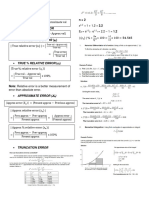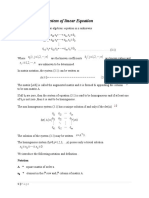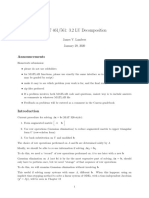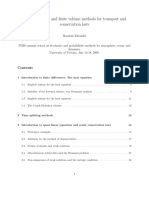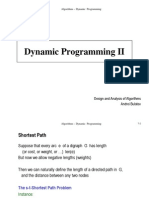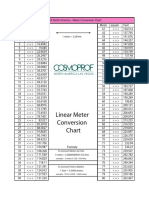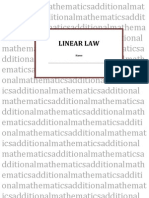0% found this document useful (0 votes)
214 views4 pagesMatrix Elimination Operations
To solve the system of equations Ax=b for an n×n matrix A, the following steps are required:
1) Matrix elimination to transform A into an upper triangular matrix. This requires n(n+1)/2 divisions and (2n^3 + 3n^2 - 5n)/6 multiplications and additions.
2) Back substitution to solve for the variables x. This requires an additional (2n^3 + 3n^2 - 5n)/6 multiplications and additions.
3) In total, solving Ax=b for an n×n matrix A requires n(n+1)/2 divisions and (2n^3 + 3n^2 - 5n)/
Uploaded by
Samira KhanCopyright
© © All Rights Reserved
We take content rights seriously. If you suspect this is your content, claim it here.
Available Formats
Download as PDF, TXT or read online on Scribd
0% found this document useful (0 votes)
214 views4 pagesMatrix Elimination Operations
To solve the system of equations Ax=b for an n×n matrix A, the following steps are required:
1) Matrix elimination to transform A into an upper triangular matrix. This requires n(n+1)/2 divisions and (2n^3 + 3n^2 - 5n)/6 multiplications and additions.
2) Back substitution to solve for the variables x. This requires an additional (2n^3 + 3n^2 - 5n)/6 multiplications and additions.
3) In total, solving Ax=b for an n×n matrix A requires n(n+1)/2 divisions and (2n^3 + 3n^2 - 5n)/
Uploaded by
Samira KhanCopyright
© © All Rights Reserved
We take content rights seriously. If you suspect this is your content, claim it here.
Available Formats
Download as PDF, TXT or read online on Scribd
/ 4

